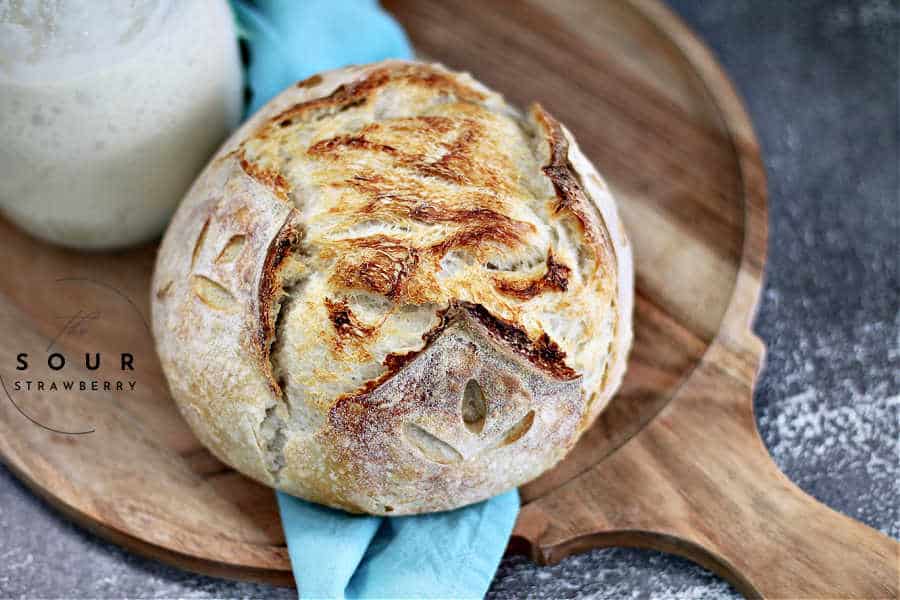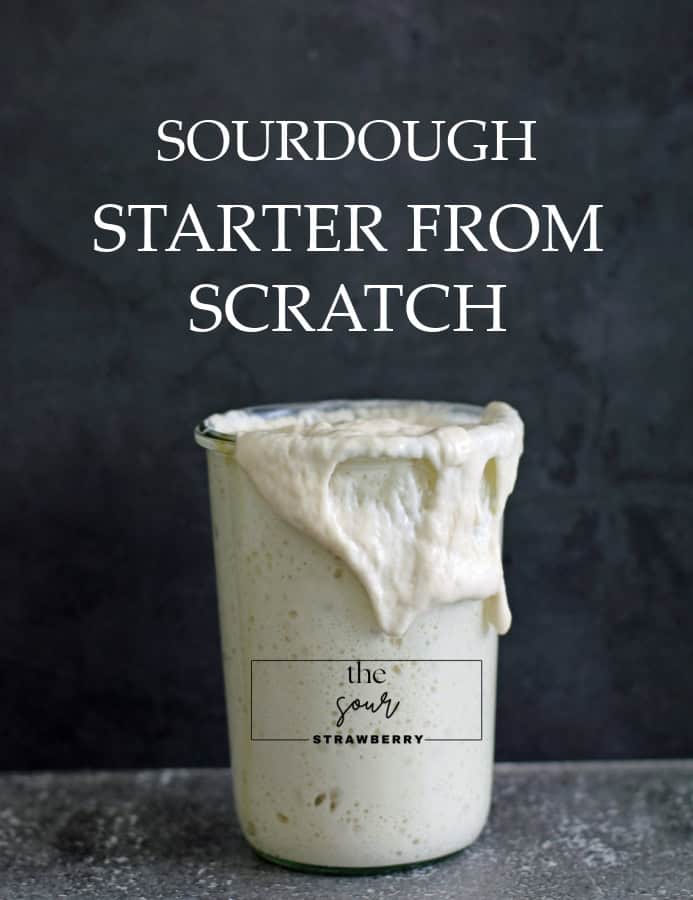Sourdough Terminology
Common Sourdough Bread Terms Explained:
Sourdough Terminology explained Your one-stop guide to sourdough bread terminology.
Sourdough Terminology Explained:
Have you read a recipe and scratched your head wondering what “that word” means? I have. When I first started my sourdough journey and started reading recipes, I was so confused, LOL. So, I started a list. Here’s a detailed list of terminology I’m sure you will find helpful.

Active Sourdough Starter
This term simply means you have fed your starter 4 – 8 hours before starting your dough. It’s active and bubbly, it could pass the float test. Meaning: adding a small amount of starting to a glass full of water, the starter floats, thus it’s ready to use for making bread.
Autolyse
Adding water to flour to hydrate it and allowing it to rest 30 – 60 minutes at the beginning of the bread making process.
Banneton
A bread proofing basket made of handwoven rattan, with a cloth insert you place your bread in to proof. Now a days you can also find them made with silicone, or you can just use a bowl with a cloth insert. There are many shapes, the most common being the round (boule), or oval.
Bench Scraper
A tool used to move and divide dough on the work surface. Usually made of metal with a round wooden handle, it can quickly and evenly cut dough. It is also great for scooping up dough to place upside down in your Banneton and scraping bread dough from your countertops for cleanup.

What is a Boule?
The French name for a round loaf of crusty bread. The traditional round shape of sourdough bread is called a boule. Learning to shape it correctly will result in a good oven spring and a beautiful loaf.
Bread Flour
In the sourdough world, bread flour vs all-purpose flour is a topic raised regularly. Bread flour has more protein which helps to build the gluten for a soft, well-structured crumb.
Bulk Rise or Bulk Fermentation
The first of two periods of time your bread is left to rise. The bulk fermentation period happens after you’ve done your stretch and folds. The dough sits out on the counter for bulk fermentation. The wild yeast gets to work rising your dough. This is done at room temperature and in most cases, you are looking for between 50 – 75% rise. Environmental factors like your homes temperature, time of year, the strength of your starter and hydration status of your dough will effect how long this takes. (keeping notes will help you determine how long to bulk rise for future loaves).
Over fermentation will leave you with a wet soggy mess…and instead of bread, you will be baking Focaccia bread or bread crumbs, so keep an eye on it.

Cold Proofing
Refers to placing the dough in the refrigerator to slow down fermentation. This helps the structure of the crumb, and the dough develops a deeper, more complex flavor. Plus, cold dough is easier to score.
Crumb
Refers to the internal structure and texture of the bread. A good crumb is soft with mid-sized air bubbles throughout.
Dough Hook
The long, weird-looking tool with the curl in it that attaches to your mixed and kneads dough. Many, including myself, use a good-quality stand mixer for kneading some of the tougher doughs. I still like to stretch and pull my Easy Basic Sourdough Bread manually.
Ear:
When you bake your bread after your Expansion Score, the bread will rise, and the top side may rise and get quite crispy, this is referred to as the “EAR”. I personally do not bake to attain an ear, as I find them hard to chew, but in some circles, it’s the ultimate win!
Float Test
Where you take a small bit of your sourdough starter and lay it in a container of water. If it floats, there is enough yeast and air in the starter to bake. If it sinks, the starter is weak and should be fed more until it’s bubbly and strong.
Flour:
You can go off the deep end with this conversation, I like to keep it simple. Regular everyday all-purpose flour works just fine. Bread flour works too, unbleached all-purpose as well. So does other wheat, but for most recipes, especially as a beginner, we are keeping it very simple…get out the all-purpose flour.
Gluten:
Protein is the proteins found in wheat, rye, barley. It provides structure and elasticity to bread dough. Many people are gluten intolerant. Due to the fermentation in sourdough, it’s much easier to digest, it however does not remove the gluten.
Hooch
A liquid that accumulates on the surface of an unfed starter indicating that it is hungry. Usually a startling, unappealing dark brown in color. You can just pour it off and feed your starter. You may see this in discard you have stored in your fridge for a while.
Hydration
Another hot topic in the sourdough world. Simply put, it’s the ratio of water to flour in a bread recipe. a high hydration loaf has a very sticky dough with a soft open (lots of bubbles) crumb. A lower hydration dough is easier to work with as it’s a little more dry and will result in a tighter crumb.

Inclusions
To add or include additional ingredients to your bread dough for flavor variations. Such as Cheddar Jalapeno, Dill and Havarti Sourdough.
Lame
A bread Lame is a tool with a razor blade attached to it used to score the dough before baking. A straight razor blade works just as well.
Levain
A small amount of ripe starter that is mixed with fresh flour and water and left to ferment. Some bakers do this before baking and use it instead of the “starter” in the bread recipe.
Oven Spring
A rapid rise in your dough during the first few minutes of baking. As the dough heats, water and acids evaporate. The yeast converts sugars into carbon dioxide and alcohol. This causes the dough’s bubbles to expand and the dough to rise.
Over-Proofing
A dough that has fermented too long. It tends to lose its shape and structure and spreads out, making it hard to shape. The gases produced by the yeast during fermentation weaken the gluten network, which causes the dough to collapse.
Proofing/Retarding
Proofing/Retarding is done during the second rise or proof and simply means you are slowing down the yeast. Shape the dough, placing your dough into a banneton, covering it with a plastic bag, and placing it into the fridge for 12 – 18 hours or longer. This slows the rise, increases the flavor of the bread, and gives the crust a darker color when baked. The longer the dough is in the fridge, the more sour your bread will be. It also creates a nice tough “skin”, which makes scoring easier.
Scoring Sourdough Bread
There are two types of scoring:
The shallow decorative scoring adds a design or art to the crust of the bread.
The Expansion Score controls the expansion of the bread in the shape and design you want. Without it, the bread will crack and expand at it’s weakest spots. It will still taste delicious, it just won’t be as pretty.
Sourdough
Bread made without commercial yeast. The starter is a natural leaven containing wild yeast and bacteria.

Sourdough Starter
Flour and water mixed together creating wild yeasts, bacteria, and organic acids used for fermenting and leaven breads. You can make Sourdough Starter from Scratch, buy dehydrated sourdough starter or ask a friend for a small amount to get started.
Sourdough Discard
We learned about discard in the How to Make a Sourdough Starter from Scratch lesson. It’s what you take out of your jar, before you feed your starter. You can throw it out, or bake a variety of amazing Discard Recipes with it. (do not bake with the discard when you are growing your starter for the first time).
Note that you don’t want to keep too much discard. Yes you can bake with it, but as your sourdough journey goes on, it gets time-consuming to feed it all, LOL
Stretch and Fold
A dough kneading method in which you pick up the edge of the dough, pull it up, and then bring it towards you, placing it down over the ball of the dough. Then, you turn the bowl a quarter turn and repeat, for a total of four times. This method manipulates and strengthens the gluten during fermentation.
Under Proofed
Dough that has not been left long enough to rise sufficiently during fermentation. This can cause low oven spring and a tight crumb.
Windowpane Test
Stretching a piece of dough between your thumbs and fingers into a square to see if it will stretch thin enough to see through. This is a good indication that your dough has enough gluten formation to create a good rise and large holes in the baked crumb.
I think I got them all, but if you find I’m missing one, let me know, I’m happy to add it.
Visit my Amazon page, where I list the products I love to use in my kitchen:
Compensated affiliate links used were available at no cost to you. View my Disclosure Page here:


- Follow me on INSTAGRAM
- Find me on FACEBOOK
- Subscribe to my YOUTUBE CHANNEL
- Pin my latest recipes on PINTEREST





